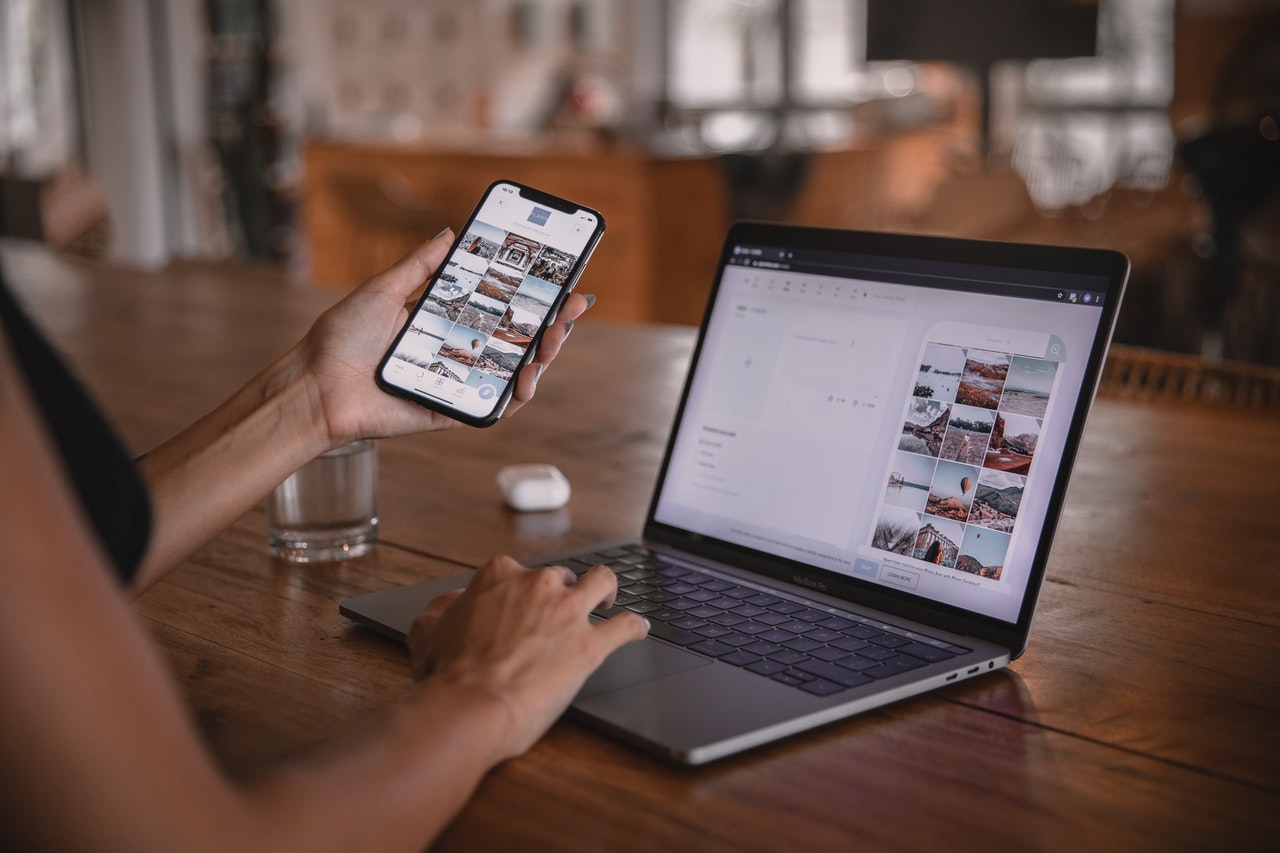The world of digital marketing is undergoing a complete overhaul with the advent of new technologies. It’s becoming all the more necessary for internet marketers to keep their fingers on the pulse of what’s changing and what’s working.
The future belongs to responsive websites that deliver maximum conversions regardless of device or screen size by ensuring optimum user experience. Today 94% of people judge websites on their design and 7 out of 10 users are less likely to return to a poorly designed site.
So, what to do here? Follow the best responsive web design principles to give your brand a competitive edge in the market. This blog highlights the top web design principles that will boost your conversions in 2022.
Now, let’s get started.
1). Minimize Text-Avoid Adding Massive Blocks of Text on the Web Page
Texts play a vital role in helping marketers craft personalized messages and trigger an emotional response from visitors.
However, when it comes to responsive web design, text-heavy pages don’t fare well except for people who visit your website on desktops or laptops with large screens. Such text-heavy pages often turn into a tedious user experience on small devices like smartphones and tablets.
It’s high time that you minimize texts to increase the conversion rate of your
responsive website. I recommend using alternative methods like video, images, and other art forms for giving detailed explanations about your products and services.
Key Takeaway: Reduce the amount of text on your responsive website. Use alternative methods like video, images, and other art forms for providing a detailed explanation about your products and services.
2). Add Clear CTA to Engage Customers
A call to action (CTA) is an essential aspect of any responsive web design, and its success will be determined by how well it’s crafted. Your CTA should stand out from the rest of the text on your website, but at the same time, it must not look like an ad banner.
A call to action button in red combined with white background usually works the best. It’s also essential to develop a CTA that appeals to your visitors and motivates them to proceed with the purchase process.
You can highlight unique features of your product or service, post-sale benefits, etc., to make your call to action button look more appealing. Make sure that you place the CTA where the user’s eyes will automatically fall on it. You should also try to match the website’s color scheme to the color of the call to action.
Key Takeaway: Place the CTA button where the user’s eyes will automatically fall on it. Ensure that your website’s color scheme matches the color of your call to action.
3). Work on Graphics More to Provide a Deeper Explanation
Graphics play an important role in persuading visitors to buy a product or service. However, you must create graphics that complement your text rather than compete with them for user attention.
Please don’t use too many different fonts on the website, and make sure they look good together. When you’re using images to highlight features of your product or services, ensure that it adds value to your overall marketing message.
Small images and graphics are an excellent way to add more information about your products and services without making the copy too long. Big images might turn off some visitors who find it difficult to view them on smaller mobile screens.
Key Takeaway: Use small images and graphics to highlight features of your product or services. Ensure that the use of images adds value to your overall marketing message.
4). Choose the Attractive Color Combinations That Fit With Your Brand Image
When it comes to selecting colors, marketers need to rely on color psychology to make sure that they encourage the right kind of impact on visitors. For example, red and black are considered to be aggressive colors that trigger a sense of urgency in customers.
In contrast, blue and green are soothing colors that promote a calming effect. Choosing an attractive color combination is important because it can help you attract and retain visitors for a more extended period. The two colors shouldn’t be too similar because it will make the design appear cluttered and not appealing to customers.
Key Takeaway: Choose an attractive color combination that fits your brand image. Ensure that the two colors aren’t too similar, making the design appear cluttered.
5). Simplify the Navigation Process With Clear Guidance
A website’s navigation is critical to its success because it lets users find what they’re looking for quickly and efficiently. Ensure that you keep your navigation menu compact, but at the same time avoid creating too many nested links within it.
A user should look at your website’s navigation menu and quickly understand where they need to go. The ideal way to display your site’s content is by using tabs because they are easy to navigate and won’t confuse people who don’t know much about the web. Your visitors should also have a clear idea of what you offer and where to find it.
Key Takeaway: Avoid creating too many nested links and use tabs for your site’s content. Ensure that visitors have a clear idea of what you offer and where to find it.
6). Add a Shorter Paragraph With Brief Information
Brevity is the soul of wit. This famous quote is quite relevant to web design because it highlights the importance of using short sentences and paragraphs.
According to an EyePath study, users only allocate 15-20 seconds to read online content. That’s why you need to write short paragraphs that convey your messages quickly without overwhelming visitors with too much information.
Make sure that you don’t use jargon and technicalities in the text. Include a clear call-to-action that will motivate users to click through and visit your website.
Key Takeaway: Write short paragraphs that convey your messages quickly without overwhelming visitors with too much information. Don’t use jargon and technicalities in the text.
7). Optimize Your Design for All the Devices
Responsive web design is a vital part of the digital marketing mix because it lets you enjoy a more sustainable marketing campaign. Make sure that your website’s text, images, and graphics are optimized for different screen sizes. Also, ensure that you don’t use too many complicated fonts or colors that confuse or put off users.
Key Takeaway: Ensure that your website’s text, images, and graphics are optimized for different screen sizes to maximize user experience. Please don’t use too many complicated fonts or colors to confuse users or put them off.
8). Make Good Use of White Space to Avoid the Cluttered Look
White space is an essential element of design. It helps you improve the overall usability and accessibility of the site. People like to focus their attention on specific elements such as images, icons, and videos. That’s why marketers need to use white space to emphasize those vital visual components to make them stand out more.
Key Takeaway: Make good white space to avoid the cluttered look. Ensure that you focus people’s attention on specific elements such as images, icons, and videos.
9). Prioritize SEO Always to Rank High
The goal of any business is to gain more visibility in search engine rankings because it helps with brand building and meeting your customers’ needs. If you optimize your website for mobile devices, search engines will automatically prioritize it in the rankings.
You should also make good use of long-tail keywords and titles because they can help you improve your site’s SEO. It’s also essential to combine SEO best practices with overall mobile optimization.
Key Takeaway: Ensure that your website is optimized for mobile devices and that you use long-tail keywords and titles to improve your site’s SEO.
10). Monitor Website Speed- A Significant Part of the overall User Experience
While many marketers focus on engaging content, they often overlook how fast their website loads. According to a recent study, users expect a site to load in about three seconds.
They may look for other options if it takes more time because the overall user experience decreases. Monitoring website speed is vital to ensure that your visitors have a positive mobile experience. Businesses should find ways to reduce page load times and improve site responsiveness. You can
use website monitoring tools to identify possible web issues and their insights.
Key Takeaway: Monitor website speed because users expect a site to load in about three seconds.
Final Words
Responsive web design is essential in today’s market. A website that does not respond to the size of the screen it is viewed on will create a bad user experience and lower conversion rates. With these ten responsive web design principles, you can optimize your site for all devices while prioritizing SEO so that you rank high for competitive keywords related to your business.
If you are looking for help designing or developing a responsive website, hire a
top website development company in India. They are highly-skilled experts and can help you out best.












